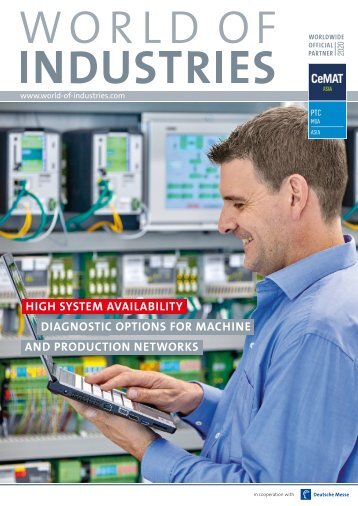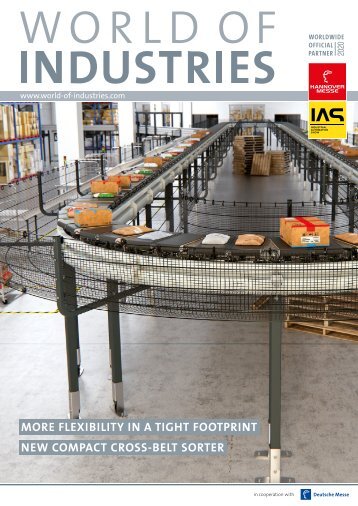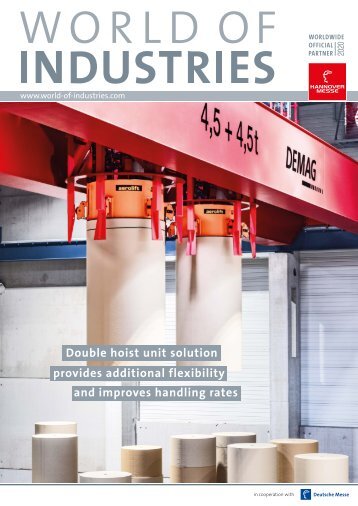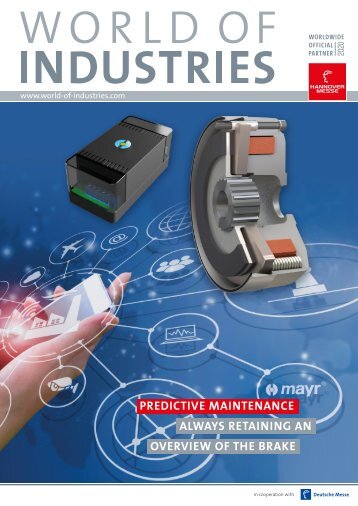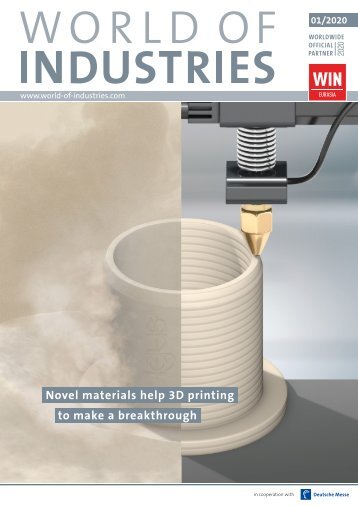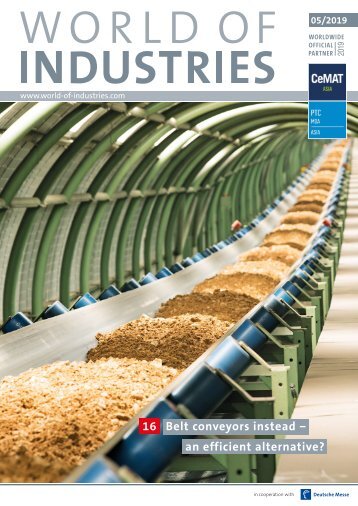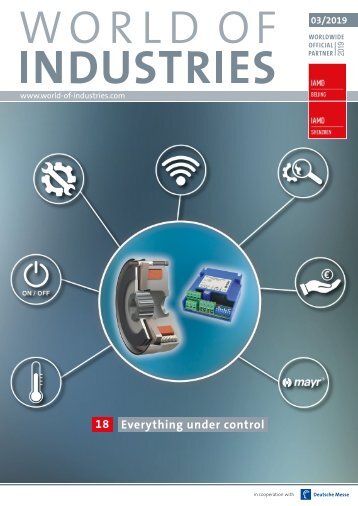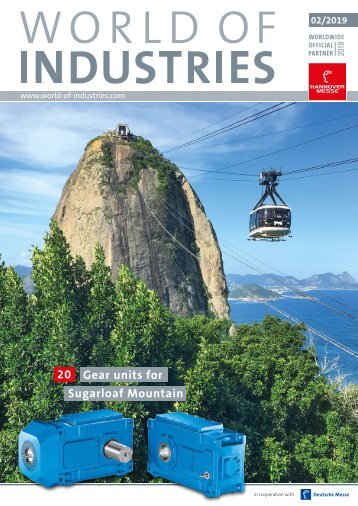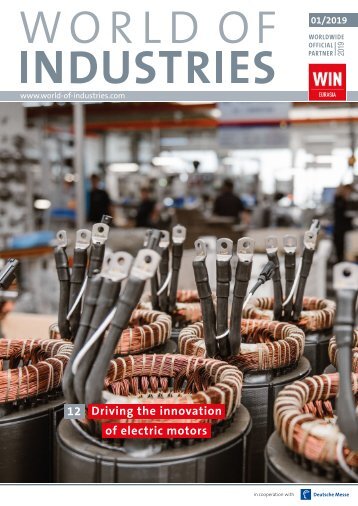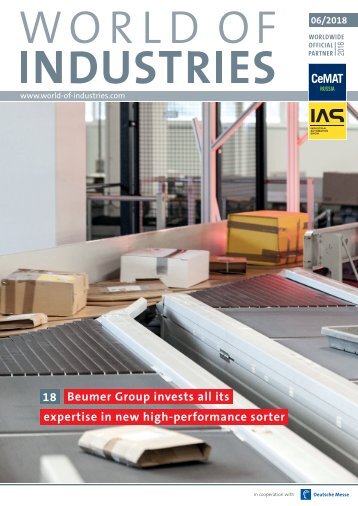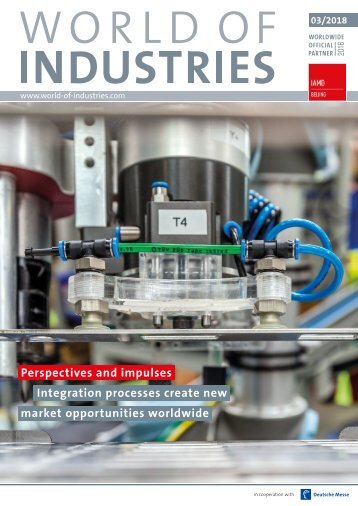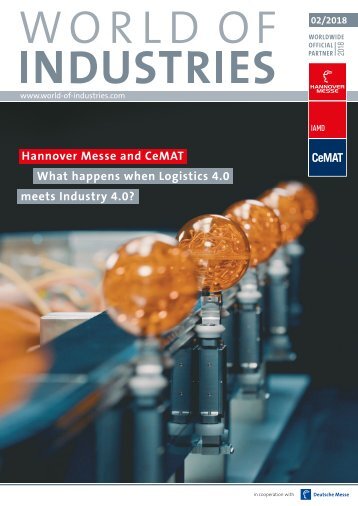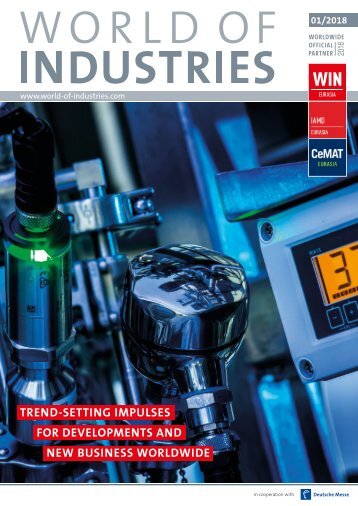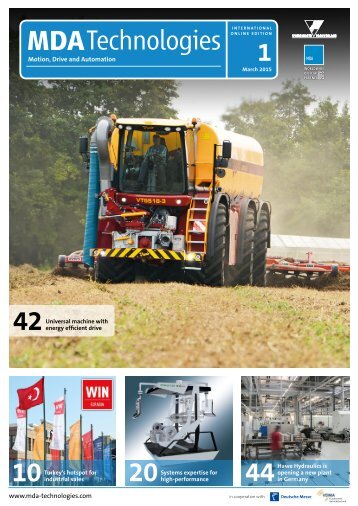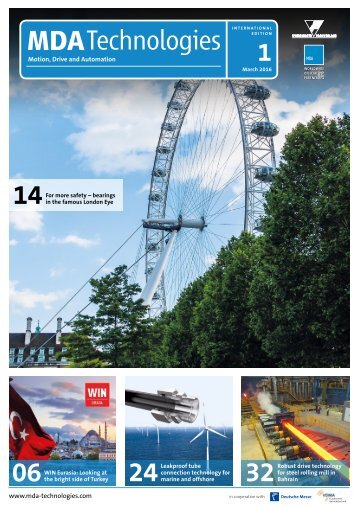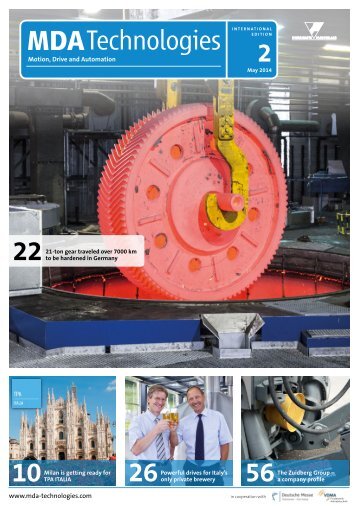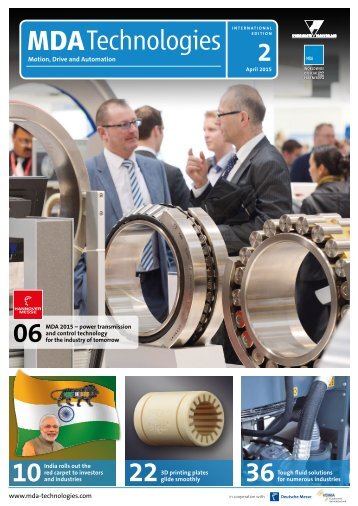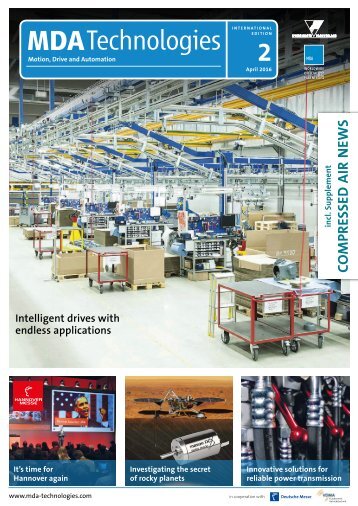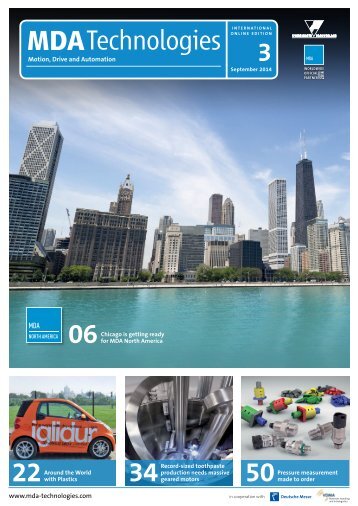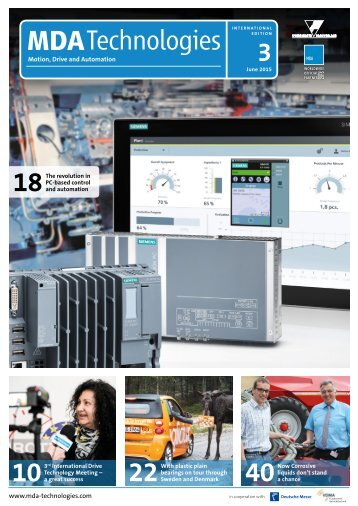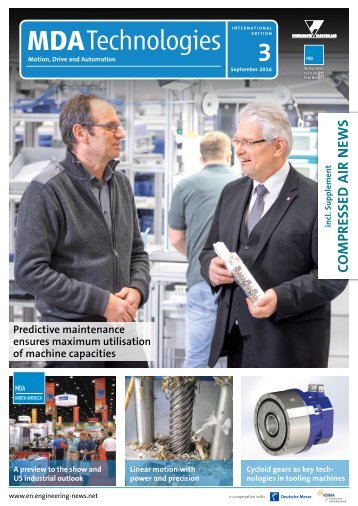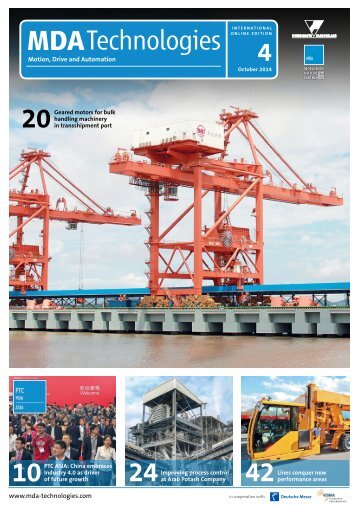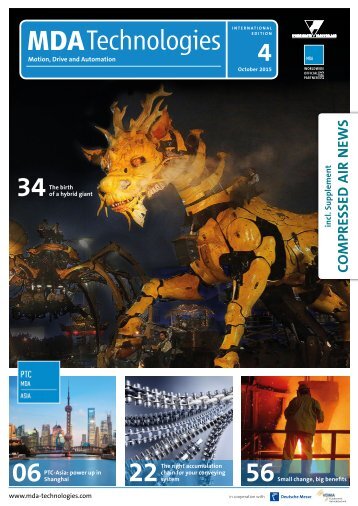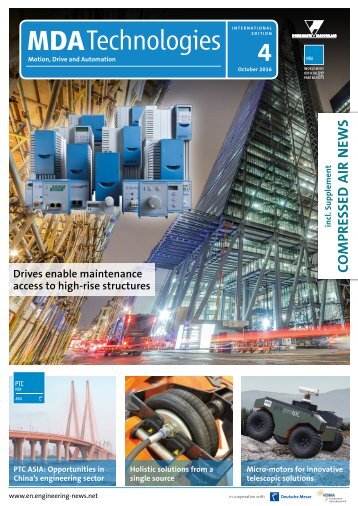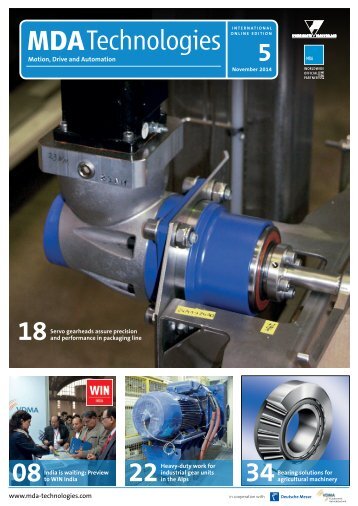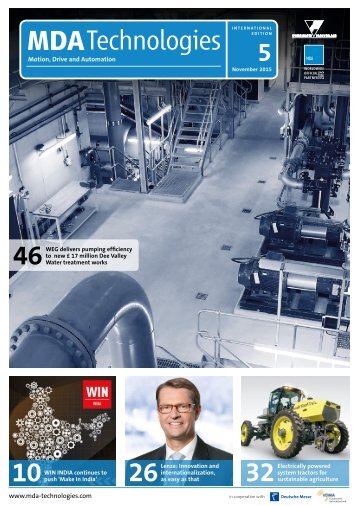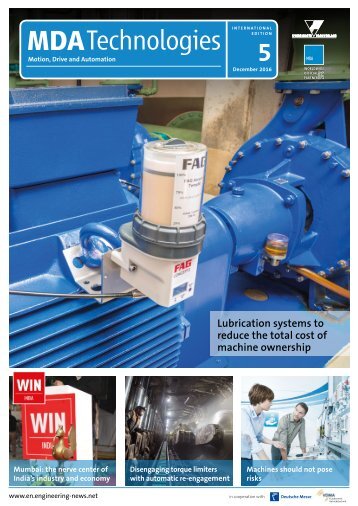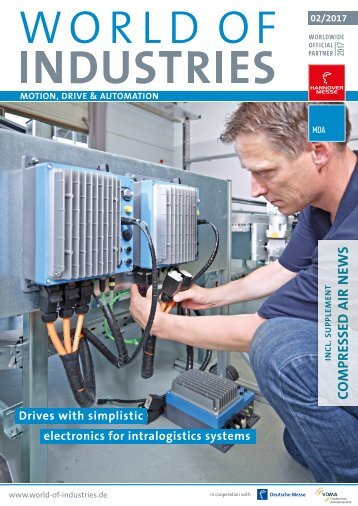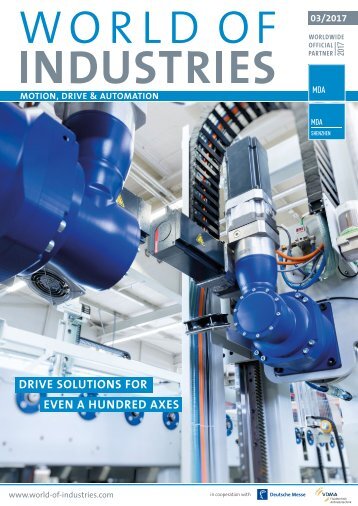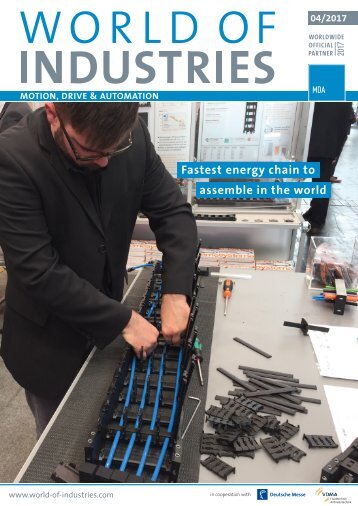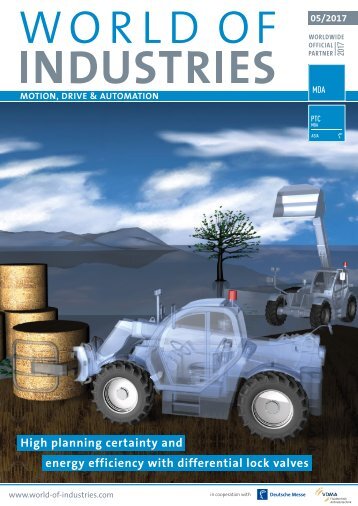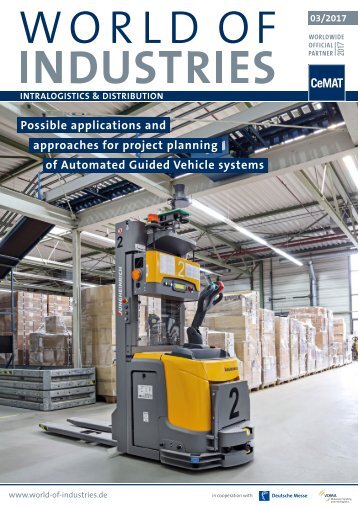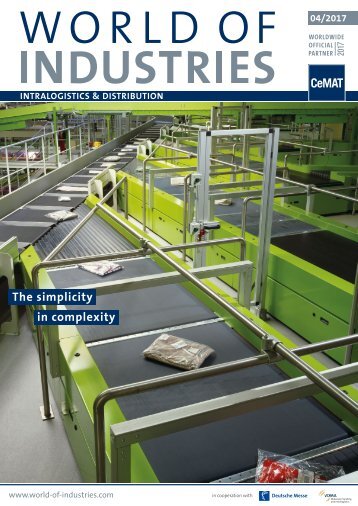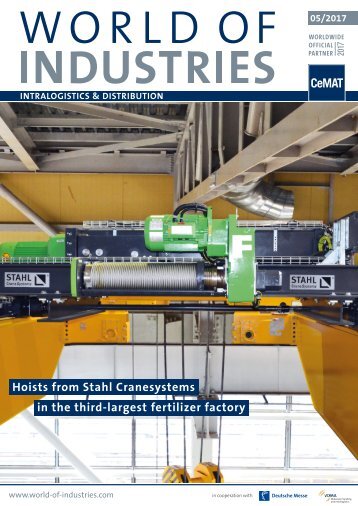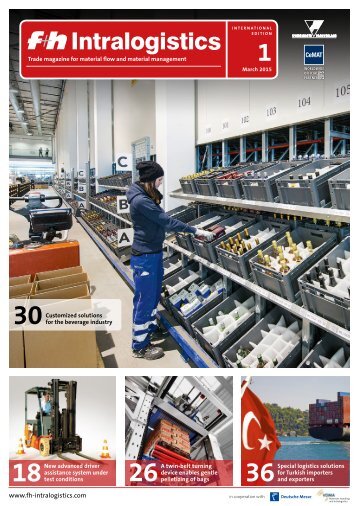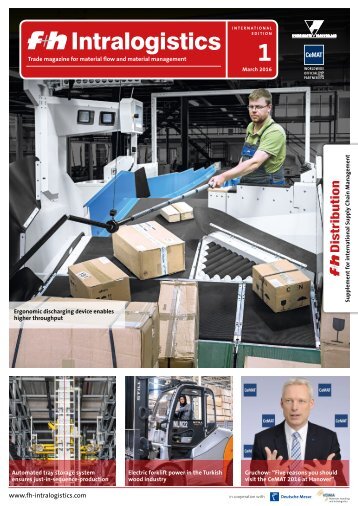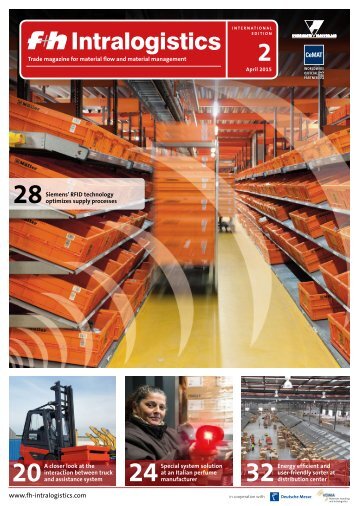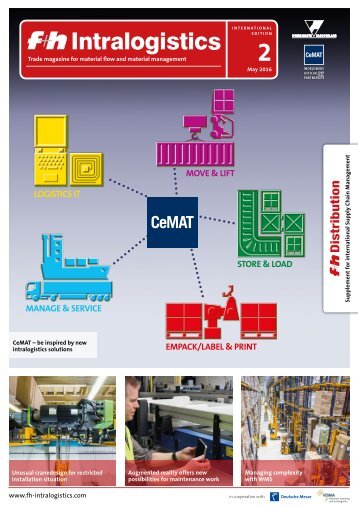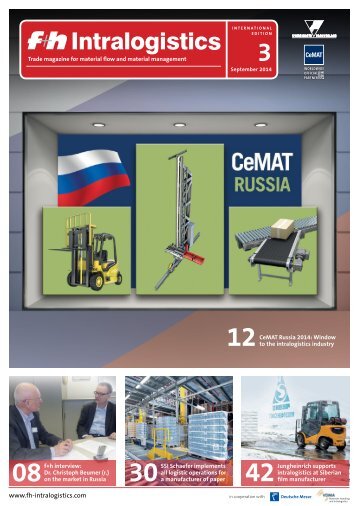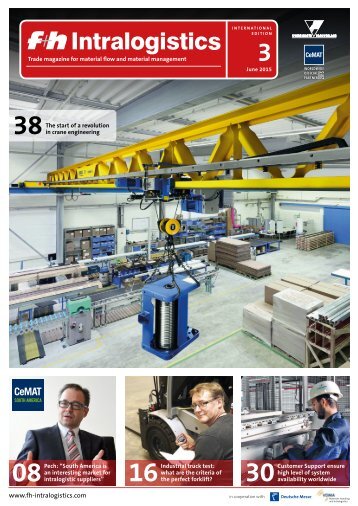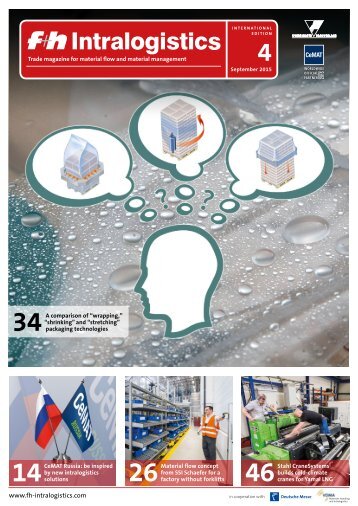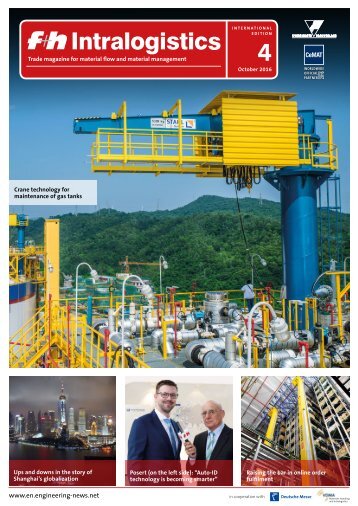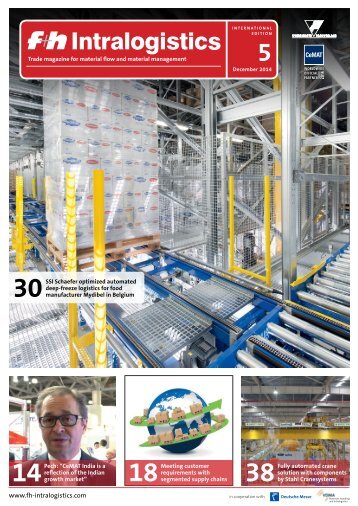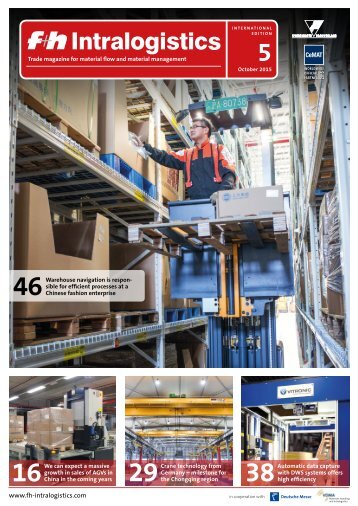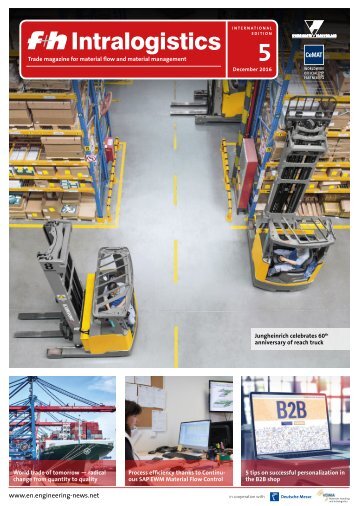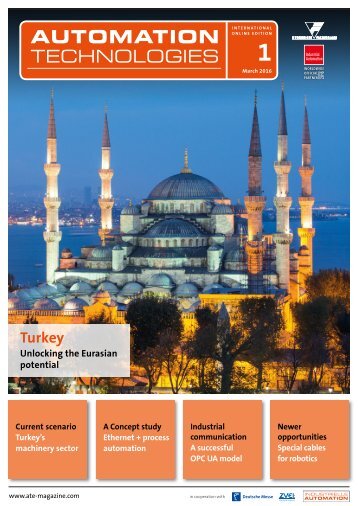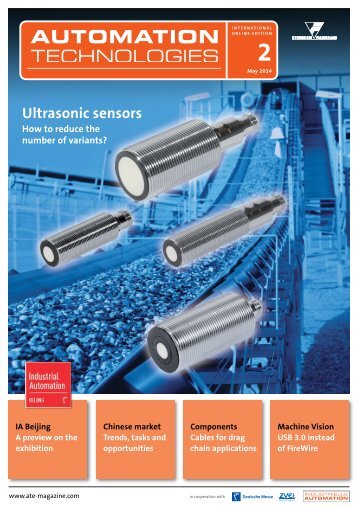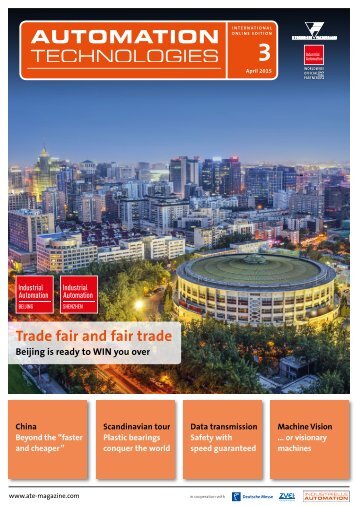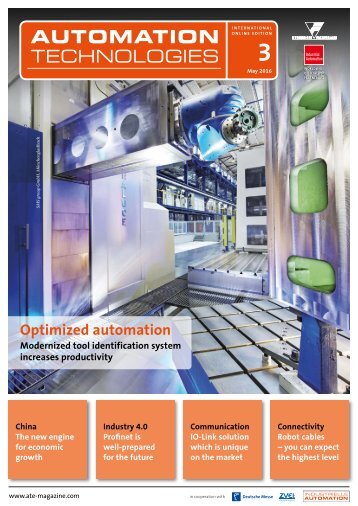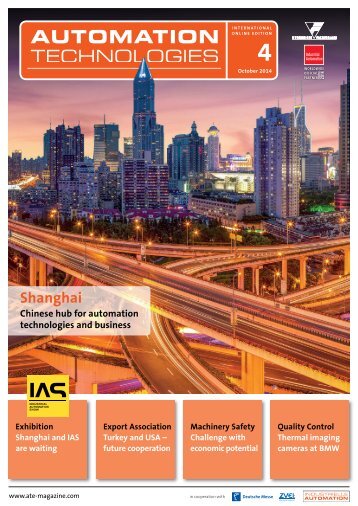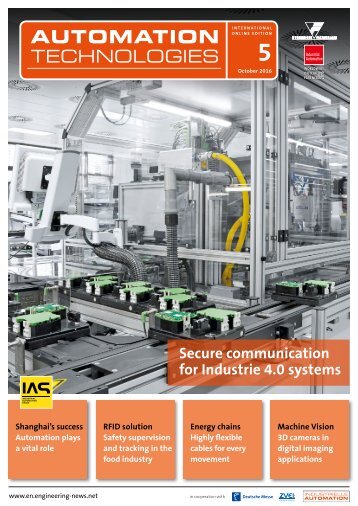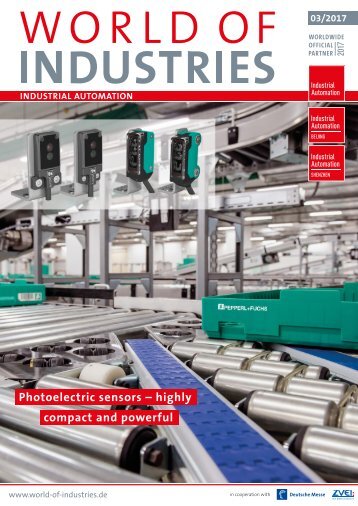MDA Technologies 2/2015
- Text
- Mda
- Technologies
MEASUREMENT AND CONTROL
MEASUREMENT AND CONTROL Speed controls in compact power packs When it comes to increasing the efficiency of your machine, OEMs place particular importance on the drives that are used. This also applies to hydraulic drives and controls that are competing against electromagnetic solutions. The report highlights that hydraulics have great efficiency potentials. About Company name: HAWE Hydraulik SE Headquarters: Munich, Germany Employees: about 2,200 Products: high-quality hydraulic components and systems
01 02 01 Valve control programmable for pressure, velocity and acceleration processes with short cycle times 02 Control circuit of a speed-controlled power pack Hydraulic power packs with speed controls open up many new options for the supply of hydraulic systems. In applications such as lathes with constant volume flow requirements, speed controls supply the hydraulic consumers according to demand. In applications requiring exact control of the hydraulic cylinders’ power, such as test facilities, they finely adjust the pressure via the speed. The appeal of speed controlled hydraulic power packs is not limited to their technical refinement, however. They also increase the energy efficiency of the machines in which they are deployed and so save hard cash during production. While the electric-hydraulic operating ratio of conventional systems comes to around 35 %, speed-controlled power packs achieve efficiency ratios of over 55 %. This means that a power pack with a rated output of 3 kW will cut the average power uptake by around 1 kW. For two shifts operations over 240 working days and at energy costs of € 0.15/ kWh, the annual savings accumulate to almost € 600.00 for each machine This recoups any additional one-off costs for the speed-control in a few months. Application in lathes In lathes the crucial point is the leakage at the rotary transmission for the hydraulic clamping chuck. While the clamping chuck rotates at 5,000 or more revolutions per minute, the leakage at the rotary transmission accumulates to two to six liters per minute. These losses must be balanced out by a adjusted volume flow. In addition, the hydraulic actuators (clamping chucks, tailstock, steady rest, tool changer, etc.) trigger strong fluctuations in the volume flow uptake. The recommendation for machine manufacturers therefore is to deploy a hydraulic system capable of balancing out these system-inherent fluctuations with minimum loss of energy. Speed-controlled power units are the solution. They adjust the hydraulic power pack’s volume flow to the actual demand, while the motor keeps operating at a good efficiency ratio. Usually the control will be so fine-tuned that the volume flow taken off by the hydraulic consumers is balanced out and the pressure level is upheld. Such a control circuit necessitates a number of components. These include a pressure sensor to meter system pressure and a PIDcontroller that calculates the reference speed from the reference pressure and system pressure. A frequency converter in the motor applies the reference speed and the pump finally converts the speed into volume flow. Special attention must be given to the fact that the power pack has to accelerate quickly to balance out any sudden volume flow demand of a consumer. Depending on the size of the motor and the pump it takes about 0.2 seconds until the nominal speed is attained. For this phase an additional hydraulic accumulator is required to offset loss of pressure. Generally, an accumulator’s volume of 500 cm 3 is adequate. Speed-controlled power packs with improved operating ratios reduce the hydraulics system’s cooling needs. However, the heat cannot be dissipated with a conventional heat exchanger, as the exchanger needs constant and unpressurized volume flow. HAWE Hydraulik’s compact power packs are advantageous here, as their cooling fan dissipates the heat via the housing. Special attention to the control To deploy power packs with frequency converter usefully, special attention should be given to the control. Once the exact pressure and volume flow requirements of individual consumers are known, the control can ensure “pinpointed” supply. Thus, no additional valves are needed, for example, to traverse the tailstock at the lath into the clamping position via fast feed and creep speed and set the load there via the pressure control. The control becomes “smarter”, if the system pressure is lowered to the required minimum. Where the preset clamping pressure is 20 bar, for example, and in case no further consumer is active, the system pressure can be lowered to around 25 bar. Compared with a constant system pressure of 50 bar this allows for an additional 50 % in energy savings. Both approaches require additional small controllers, such as Hawe Hydraulik’s programmable logic valve control, type PLVC, which is fine-tuned to the control of hydraulic systems. Communication with the master control of the machine can be realized by means of a Profi-Bus interface. Use in testing applications The combination of speed-controlled power packs and a programmable logic valve control makes sense for many other fields of application as well. Highly precise power controls can be realized, if pressure serves as set point. This is of particular interest for test applications. For example, if an increasing force shall be exerted on test specimen over a very long time, such as a couple of days, this can be very well realized by the gradual buildup of pressure. Radial piston pumps are particularly well suited for such an application, because, unlike other pump types, they are not limited in their minimum speed. They can operate at rotational speeds of even 1/sec, so that the smart arrangement of the system enables pressure to build up with an exactness of less than one bar. This system is highly efficient and generates a negligible heat input. Other test applications require a loadindependent build-up of force with predefined velocity sequences. A speedcontrolled power pack is once again capable of solving this task. As the velocity of a hydraulic cylinder depends immediately on the volume flow supplied, and as this velocity increases with rotational speed, it is actually an application that is particularly easy to realize. If a highly precise speed control is required, feedback via a position sensor system is recommended. Power packs with frequency converters offer another feature that was hardly utilized so far. The converter provides output signals on the current rotational speed and the uptake of electric power. There is a direct connection between power and pressure as well as rotational speed and volume flow. The evaluation of signal deviations can therefore be used to detect disruptions in the system, such as pump wear or failure. Thus, it enables system diagnosis without additional sensors. www.hawe.com MDA Technologies 2/2015 39
- Page 1: Motion, Drive and Automation INTERN
- Page 4: TABLE OF CONTENT 16 Bottom-up rathe
- Page 7 and 8: 01 Power transmission and control t
- Page 9 and 10: RUBRIZIERUNGSEBEBE 2 I RUBRIZIERUNG
- Page 11 and 12: NEWS AND MARKETS of doing business
- Page 13 and 14: Turkish Machinery at Hannover Messe
- Page 15 and 16: HAWE plant in Kaufbeuren passes EHS
- Page 17 and 18: WE KEEP YOU AHEAD OF THE COMPETITIO
- Page 19 and 20: which are for the domestic two-whee
- Page 21 and 22: MACHINE ELEMENTP Antriebstechnik.
- Page 23 and 24: MACHINE ELEMENTS onto the next unti
- Page 25 and 26: DRIVE TECHNOLOGIES 01 02 03 04 been
- Page 27 and 28: Soft starter - comfortable operatio
- Page 29 and 30: Tretter supplements torque ball sle
- Page 31 and 32: ROTARY TORQUE TRANSDUCERS Intellige
- Page 33 and 34: DRIVE TECHNOLOGIES loping efficient
- Page 35 and 36: Product News Magnetic valve from B
- Page 37: MACHINE ELEMENTS Its resistance to
- Page 41 and 42: MEASUREMENT AND CONTROL 01 02 suppl
- Page 43 and 44: Your partner from the start. Hybrid
- Page 45 and 46: CASE STUDY 01 02 03 Not only for ma
- Page 47 and 48: Author: Robert Timmerberg, MA, edit
- Page 49 and 50: CASE STUDY 01 Parker tandem sealing
- Page 51 and 52: CASE STUDY of seal life due to dama
- Page 53 and 54: OUR BIG PICTURE Bochum It rare spec
Inappropriate
Loading...
Mail this publication
Loading...
Embed
Loading...

